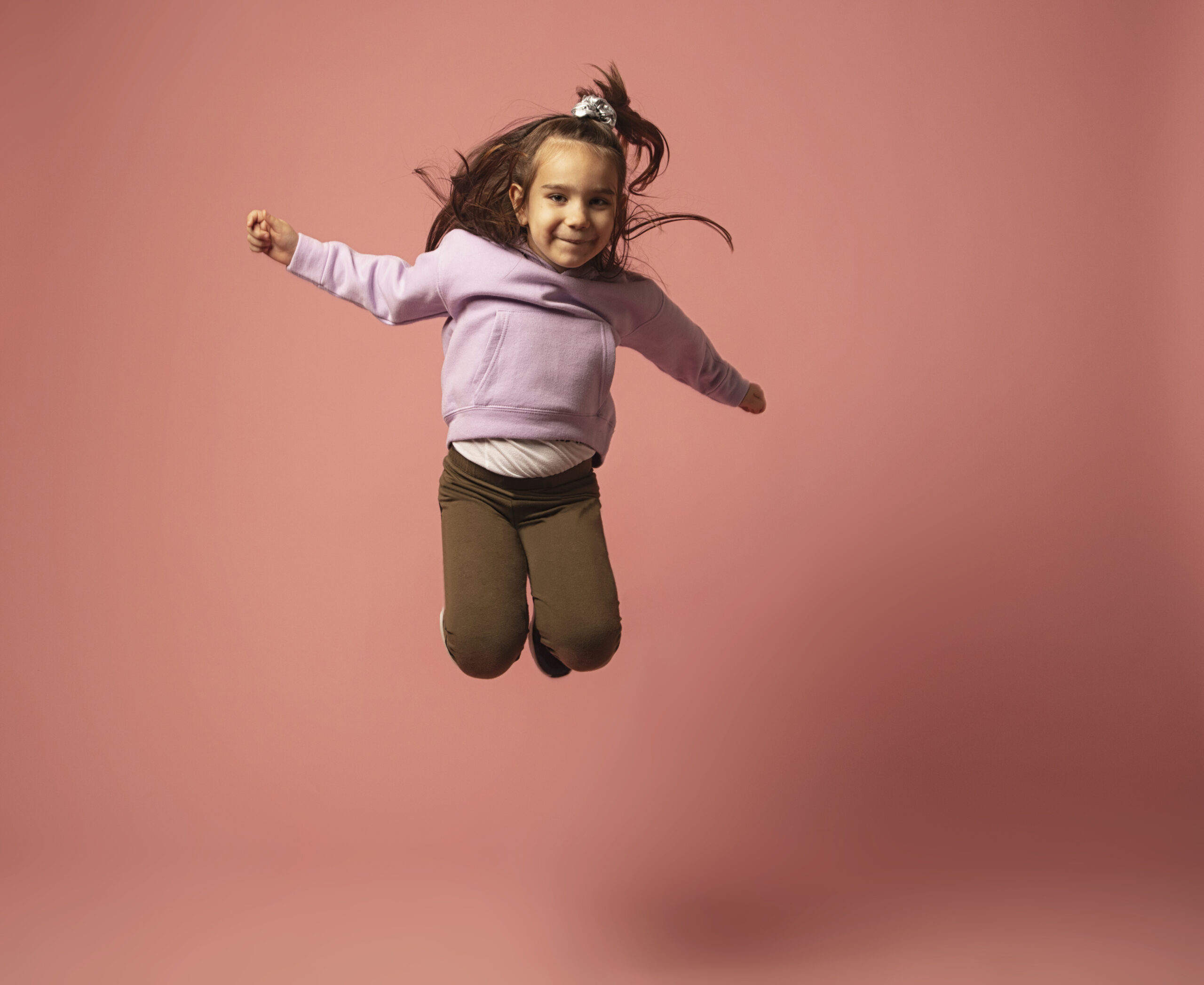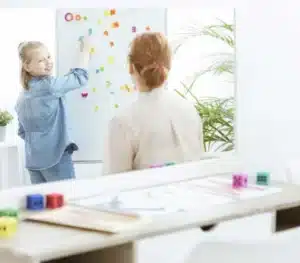By Deborah Lee MS, OTR/L
“When should my child start jumping?” is one of the common questions asked by parents. All the more, when parents see their child’s peers jumping up and down, they cannot help but to compare and become concerned. According the research, children should be able to learn how to jump between 16 to 18 months old. This developmental timeframe is also around the time children start learning to run. Therefore, when your child is beginning to pick up their running pace, it is appropriate to support them with activities in order for them to achieve their jumping goal!
Jumping ties into several key areas of development and skills, some but not limited to: motor planning, balance, and muscle strength. Now, some people may not know what motor planning is – so, what is it? Motor planning is “the ability to conceive, plan, and carry out a skilled motor act in the correct sequence from start to end”. In layman terms, your brain is sending signals to the rest of your body in attempt to perform a specific motor act/skill, in this case jumping. In conjunction with motor planning, balance skills and muscle strength are required in order for a child to be able to successfully jump. Without balance skills, a child will not have the postural control as well to stabilize themselves in a standing position when attempting to start the sequencing of jumping and will fall when attempting to land on both of their feet. Similarly to overall body muscle strength, without core and leg strength, your child will most likely not be able to lift themselves up off the ground.
So, how can we support our children to meet this specific gross motor developmental milestone? First and foremost, encourage and initiate many opportunities for outdoor play, such as climbing up and down playground apparatus or even running. If outdoor play is not an easy option due to living conditions at home or if there are no parks in close proximity, parents can also create opportunities for children in the home, such as creating a 1-step, 2-step, or even 3-step obstacle courses for your child to climb under, over, etc., have your child step on low leveled stools for them to jump down onto the floor, or have them ascend and descend stairs. You can even purchase a mini trampoline for your child and at times, this is the best equipment to utilize to introduce jumping skills to your child. And of course if purchasing a trampoline is not easy, you can always improvise at home and have them simply attempt to jump or bounce up and down on the bed.
While there are so many strategies to support your child with their jumping skills, it is also important to not overwhelm them since this can intimidate your child and deter them away from wanting to do the act of jumping. Most importantly, start off with baby steps such as having them climb lower leveled equipment first then jump off onto the floor. Once you notice continued progress, you can make the activity or task more difficult for your child in hopes to challenge them by increasing the distance from the ground up and more.
Here is a case study of a 3-year old boy that came into occupational therapy session with no jumping skills:
Mother expressed concerns that all of his peers in his classroom already know how to jump and she felt stressed that her child was the only one who did not know. Sessions typically started with a 2-step obstacle course that included crawling through a sensory tunnel then walking or running along an uneven surface (couch cushions) to maintain balance skills as well. We also placed 2 to 3 painters tape on the floor that were approximately 5 inches apart to provide visual cues, having the child step on the first painters tape then attempt to jump to the next tape. Because he had no jumping skills yet, the therapist or mother would manually bend his legs in between hers then lift him off the ground in order for him to land on both of his feet thereafter. After several sessions of repeating this activity, the child was able to attempt to jump while alternating his feet at the least. Therapist also encouraged mother to purchase a mini trampoline and model for the child at home while both of them were on it.




